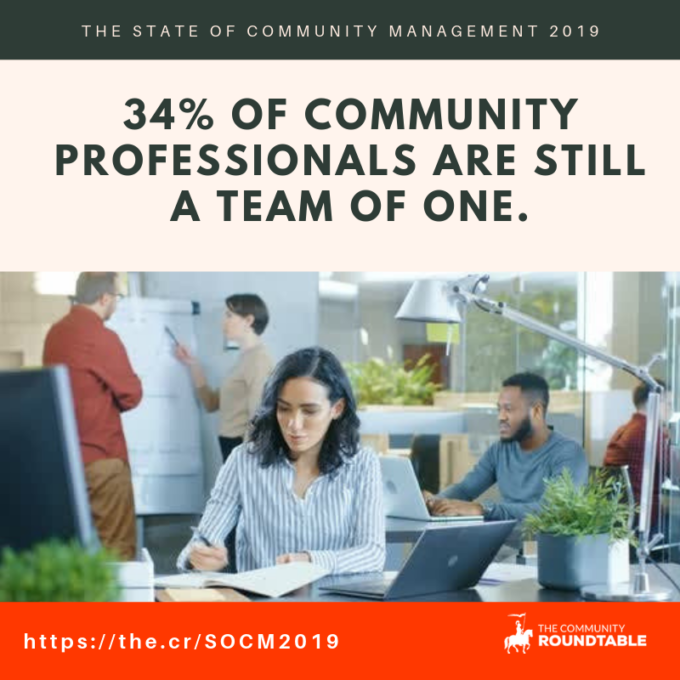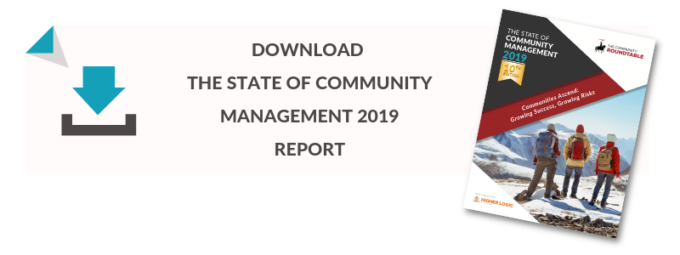
34% of community professionals surveyed in the State of Community Management 2019 are still on teams of one, with the average community team now at six individuals, four of whom are full-time.
Surprisingly, the size of a team currently does not show consistent correlation to use case, the number of members in a community, the ROI of the community, or the sophistication of community strategy. This indicates there is little rationale in staffing to fit the needs or value of the community and suggests that staffing still relies on ad hoc support, that may just be one enlightened executive who believes in the promise of building community.
This disconnect further reinforces that community roles are not well rationalized – and justifying new headcount relies more on persuasion or vision than on responsibilities and results. This implication is further reinforced by looking at the disconnect between growth in value and the resulting increase in staffing and resources. 67% of community programs saw an increase in value and 70% of professionals report that the perception of their credibility and value has increased, yet only 34% of community programs saw any increase in staffing.
Additionally, only 49% of community professionals have been promoted, despite that increase in value and credibility. Not surprising then, when asked about their biggest frustration, community leaders identified lack of resources. Community value is growing significantly, but resources and compensation is lagging behind and often never materializes. This incongruity needs to be addressed by organizational leaders.

Note: This post contains content originally published in the State of Community Management 2019 report. Download your free copy here.
